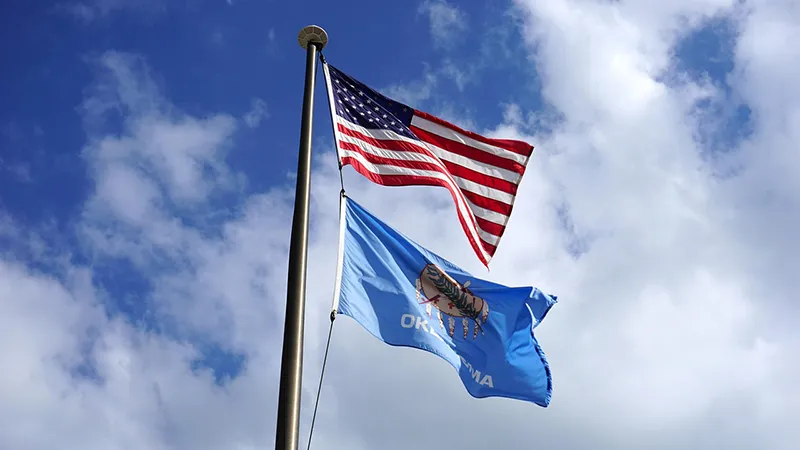Lehigh OklahomaATTRACTIONS & THINGS TO DO
Listed below are the best attractions and things to do near Lehigh, Oklahoma.
1. Coal Miners Museum
MINING HISTORY PRESERVED
The Coal Miners Museum documents the rich mining heritage of southeastern Oklahoma. Visitors can explore artifacts, photographs, and exhibits that tell the story of the coal mining industry that shaped the region. The museum provides insight into the daily lives and challenges of miners who worked in the area in the late 19th and early 20th centuries.
2. Mowdy Ranch
HISTORIC WORKING RANCH
Mowdy Ranch offers visitors a glimpse into Oklahoma's ranching traditions. The historic property maintains working ranch operations while providing opportunities for visitors to experience rural Oklahoma. Guests can enjoy horseback riding, cattle drives, and authentic ranch accommodations.
3. Oklahoma History Center
STATE'S PAST EXPLORED
The Oklahoma History Center serves as the state's premier history museum with exhibits spanning Oklahoma's diverse cultural heritage. The facility houses extensive collections documenting Native American history, pioneer settlement, and modern development. Visitors can explore interactive displays, research archives, and outdoor exhibits that bring Oklahoma's past to life.
4. Honey Springs Battlefield
CIVIL WAR HISTORIC SITE
Honey Springs Battlefield preserves the site of the largest Civil War battle fought in Indian Territory. The July 1863 battle was significant as the first time African American troops were used in combat during the Civil War in Indian Territory. Today, visitors can walk interpretive trails, view exhibits, and attend living history events that commemorate this important historical site.
5. Pioneer Woman Museum and Statue
CELEBRATING FRONTIER WOMEN
The Pioneer Woman Museum and Statue honors the strength and determination of women who helped settle the American frontier. The 17-foot bronze statue depicts a young mother moving confidently forward with her son by her side. The accompanying museum features exhibits on women's experiences during Oklahoma's territorial and early statehood periods.
6. Oklahoma Route 66 Museum
HISTORIC HIGHWAY MEMORABILIA
The Oklahoma Route 66 Museum chronicles the history and cultural impact of America's most famous highway. Exhibits take visitors on a journey through six decades of Route 66 history, from the Great Depression to modern times. The museum features period settings, vehicles, and authentic artifacts that capture the spirit of the Mother Road.
7. Will Rogers Memorial Museum
HONORING OKLAHOMA'S SON
The Will Rogers Memorial Museum celebrates the life of Oklahoma's favorite son, humorist and performer Will Rogers. The museum houses the world's largest collection of Will Rogers memorabilia, including saddles, photographs, and personal belongings. Visitors can view Rogers' films, read his witty newspaper columns, and learn about his significant cultural impact on America.
8. Stand on Three States Monument
TRI-STATE BORDER EXPERIENCE
The Stand on Three States Monument allows visitors to simultaneously stand in Oklahoma, Kansas, and Missouri. This unique geographical marker is located at the precise point where the three states' borders meet. Though simple in design, the monument provides a memorable photo opportunity and geographical curiosity for travelers.
9. Sod House Museum
PIONEER PRAIRIE HOME
The Sod House Museum preserves the only remaining authentic sod house in Oklahoma. Built by homesteader Marshall McCully in 1894, the sod house represents the resourcefulness of early settlers who used the materials available on the treeless prairie. Visitors can step inside this remarkable structure and experience the primitive yet ingenious living conditions of Oklahoma's territorial days.
10. Tom Mix Museum
SILENT FILM COWBOY
The Tom Mix Museum celebrates America's first Western movie star and his significant cultural impact. Mix starred in 336 films between 1909 and 1935, helping to define the cowboy hero image in American cinema. The museum displays a collection of Mix's personal effects, movie memorabilia, and his famous riding gear.
11. Fort Gibson Historic Site
MILITARY HISTORY PRESERVED
Fort Gibson Historic Site preserves one of the oldest military posts in Oklahoma, established in 1824. The reconstructed log fort and original stone buildings document the military presence that maintained peace on the frontier. Visitors can explore barracks, officers' quarters, and the bakehouse while learning about the fort's role in the Trail of Tears, Civil War, and settlement of Indian Territory.
12. Hunter's Home
ANTEBELLUM CHEROKEE MANSION
Hunter's Home is the only remaining antebellum plantation home in Oklahoma, built by George Murrell in 1845. This historic Cherokee plantation offers insight into the prosperous lifestyle of some members of the Cherokee Nation before the Civil War. Tours showcase original furnishings, period clothing, and the beautiful grounds that once supported this working plantation.
13. Henry and Anna Overholser Mansion
VICTORIAN ARCHITECTURAL GEM
The Henry and Anna Overholser Mansion stands as a testament to the elegance of Victorian architecture and the prosperity of Oklahoma's early business leaders. Completed in 1903, the three-story mansion features original furnishings, ornate woodwork, and stained glass that showcase the luxurious lifestyle of the Overholser family. Tours of this impressive home offer visitors a glimpse into Oklahoma City's territorial and early statehood periods.
14. White Hair Memorial
OSAGE CULTURAL CENTER
White Hair Memorial preserves the legacy of Chief Edward Bellefontaine, also known as Chief White Hair of the Osage. The memorial includes a historic farmstead and cultural exhibits highlighting Osage history and traditions. Visitors can explore artifacts, photographs, and cultural displays that document the Osage Nation's significant contributions to Oklahoma history.
15. The Chisholm
HISTORIC CATTLE TRAIL
The Chisholm museum chronicles the famous cattle trail that connected Texas ranches to Kansas railheads in the post-Civil War era. Exhibits document the cowboys, cattle drives, and communities that developed along this important economic corridor. Visitors can learn about Jesse Chisholm, the trail's namesake, and the lasting impact of the cattle industry on Oklahoma's development.
